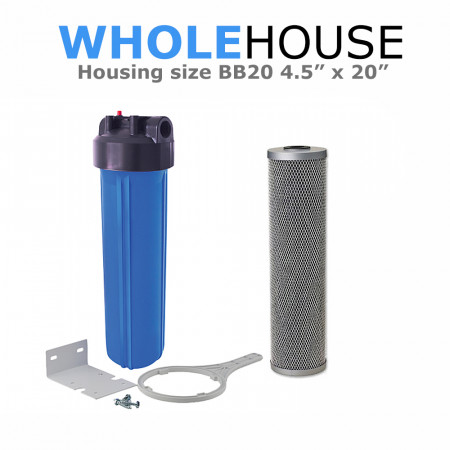Removing Lead from Water Supply: Ensuring Clean and Safe Drinking Water
Introduction
Lead contamination in water supplies is a growing concern for communities worldwide. The presence of lead in water can have severe health consequences, especially for children and pregnant women. In this article, we will explore effective methods to remove lead from water supplies, ensuring that everyone has access to clean and safe drinking water.
The Dangers of Lead in Water
Before we delve into the methods of lead removal, let's understand why lead in water is a cause for concern. Lead is a toxic metal that, when consumed, can accumulate in the body over time and lead to various health issues. These can range from slow developmental and behavioral disorders in children, to kidney problems and cardiovascular diseases in adults. It is crucial to eliminate lead from our water supply to protect public health.
Testing Your Water for Lead Contamination
The first step in addressing lead in your water supply is to test for its presence. Contact your local water authority or a certified laboratory to have your water tested. You can also purchase lead testing kits, which are readily available in the market. If the results indicate lead contamination, it is important to take swift action to remove this harmful substance from your water.
Effective Methods of Lead Removal
1. Point-of-Use Filters
Installing point-of-use filters is one of the most common and effective ways to remove lead from water. These filters are designed to be placed directly on faucets or used in water pitchers. They work by forcing water through a specialized filter cartridge that captures lead particles, leaving you with cleaner and safer drinking water. However, it is important to note that these filters need to be regularly replaced according to the manufacturer's recommendations to ensure their effectiveness.
2. Reverse Osmosis Systems
Reverse osmosis systems are highly efficient in removing lead and a wide range of other contaminants from water. These systems use a semi-permeable membrane to separate impurities, including lead, from the water. As the water passes through the membrane, the impurities are trapped, allowing only clean water to pass through. Reverse osmosis systems are typically installed under the sink or as a whole-house system, providing comprehensive water purification for your entire household.
3. Distillation
Distillation is a process that involves boiling water and collecting the condensed steam, thereby leaving the impurities behind. This method effectively removes lead, as well as other contaminants such as bacteria, viruses, and heavy metals. However, it is important to note that distillation can be energy-intensive and time-consuming. Additionally, some volatile organic compounds may evaporate along with the water, so it is advisable to use activated carbon filters alongside distillation to ensure comprehensive purification.
4. Acidic Water Neutralization
Lead is more soluble in acidic water, which increases the risk of contamination. Acidic water is commonly caused by low pH levels, often found in homes with plumbing systems containing lead pipes or fittings. Neutralizing the water's acidity can significantly reduce the risk of lead leaching into the water supply. Using an acid-neutralizing filter or adding alkaline substances can help raise the pH levels and minimize lead dissolution.
Conclusion
Lead contamination in water is a serious health concern that requires immediate attention. By testing your water supply and implementing suitable lead removal methods, you can ensure the safety of your drinking water. Whether you choose point-of-use filters, reverse osmosis systems, distillation, or techniques to neutralize acidity, taking proactive steps to remove lead from your water supply is crucial for safeguarding the health and well-being of your entire household. Remember, clean and safe drinking water is a fundamental right for every individual, and it is our responsibility to protect ourselves and our loved ones from the dangers of lead contamination.
800GPD Direct flow Reverse Osmosis Drinking Water System
Next Generation Tankless On-Demand Reverse Osmosis Water Purifier Tankless on-demand Drinking W..
£345.00
Aqua Perfecta PURA Reverse Osmosis System 100 GPD
The Aqua Perfecta PURA Reverse Osmosis System 100 GPDDescriptionMulti-Stage superb compact filtratio..
£99.95
Aqua Perfecta Fresca upto 1000GPD RO Direct flow stainless steel reverse osmosis system
Next Generation Tankless On-Demand Reverse Osmosis Stainless Steel Water Purifier Tankless on-d..
£265.00
LEAD, Heavy Metals Reduction Coconut Carbon Block Filter Cartridge
LEAD, Heavy Metal, Arsenic Reduction 100% Coconut Carbon Block Water FilterPure Coconut Carbon Block..
£24.95
Fluoride, Heavy Metal & Chlorine Filter Cartridge
Fluoride, Heavy Metal, Chlorine Filter Cartridgefor the removal of Heavy metals, Fluoride, Arsenic, ..
£27.35
Bacteria, Cysts, Heavy Metals & Chlorine Removal Single Deluxe Water Filtration System
Undersink Water Filter Kit With Contemporary Style Tap0.5 Micron nominal filtrationSilver impre..
£63.24
WH02 Whole house Water Filtration System
Filter Size: 4.5 x 10 Inch (BB10) Service Life: 1 year (subject to water conditions) Recommended..
£275.00
Fluoride, Chlorine & Heavy Metals Deluxe Water Filter System
Fluoride, Chlorine & Heavy Metals Water Filter System Consists of a single HMFLR&nb..
£67.20
LEAD, Chlorine & Heavy Metals Deluxe Water Filter System
LEAD, Chlorine & Heavy Metals Water Filter System Consists of a single LRC filter c..
£75.30
Limescale & Chlorine Removal Single Delux Water Filtration System
Undersink Water Filter Kit With Contemporary Style TapLimescale & Chlorine Removal Filter C..
£64.00
Double Whole House Water Filtration System BB20
Double 20" Big Blue Whole House Water Filtration System with 5 Micron Sediment & Carbon Filter w..
£231.00
UNDER SINK WATER FILTRATION SYSTEM
Undersink Water Filtration System, one of the most advanced multi-stage water filter technology ava..
£105.00
UNDER SINK WATER FILTRATION SYSTEM
Undersink Water Filtration System, one of the most advanced multi-stage water filter technology ava..
£139.50
Whole House Water Filtration System BB20 With Silverised Carbon Block
BB20 Housing with Pressure Relief button, a Whole House Water Filter System, with 5 Micron Antibacte..
£120.94
Limescale & Chlorine removal Triple Deluxe Water Filtration System
Limescale & Chlorine Removal Undersink SystemProduct descriptionUnder-sink water filter.Ea..
£110.00

















